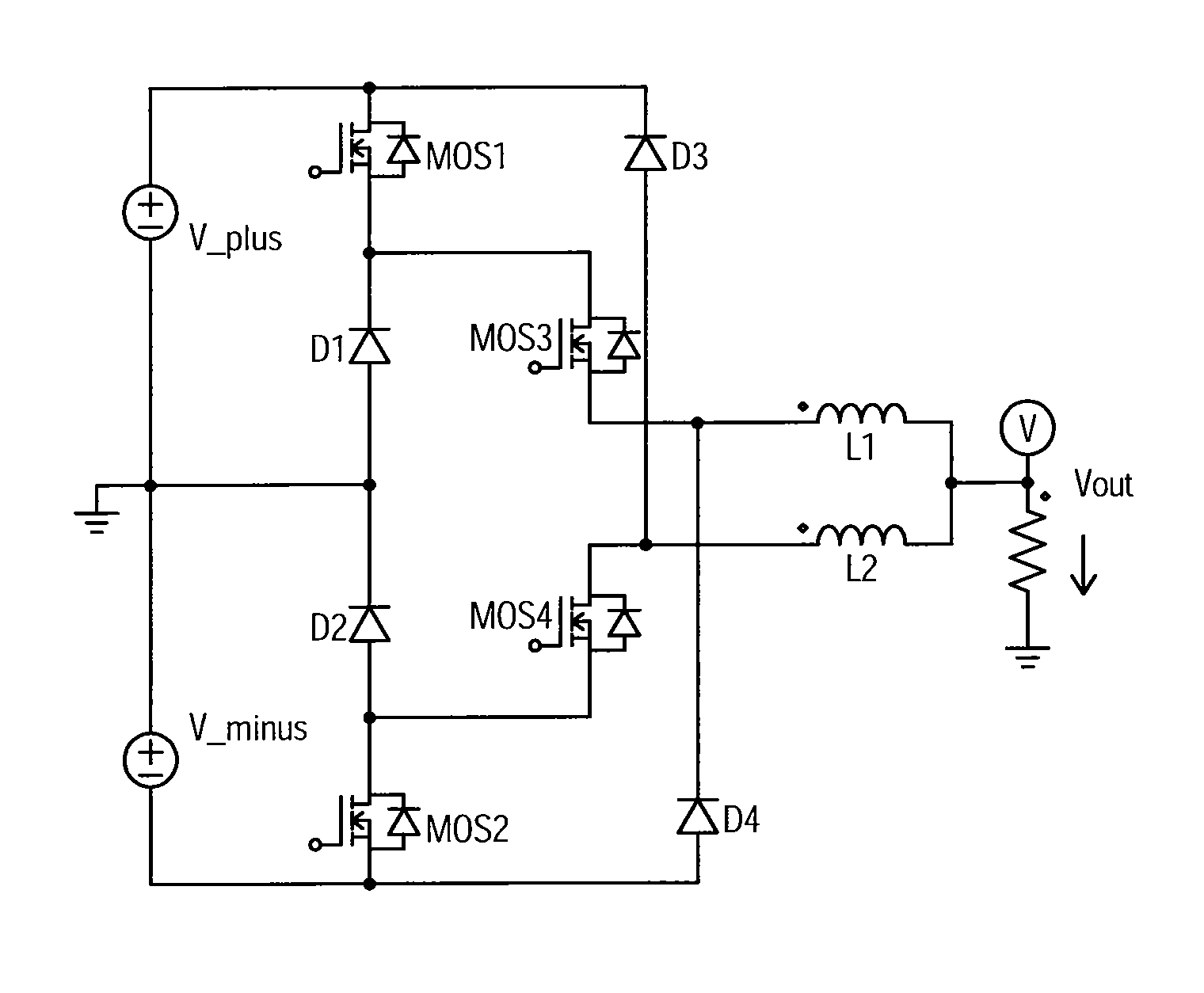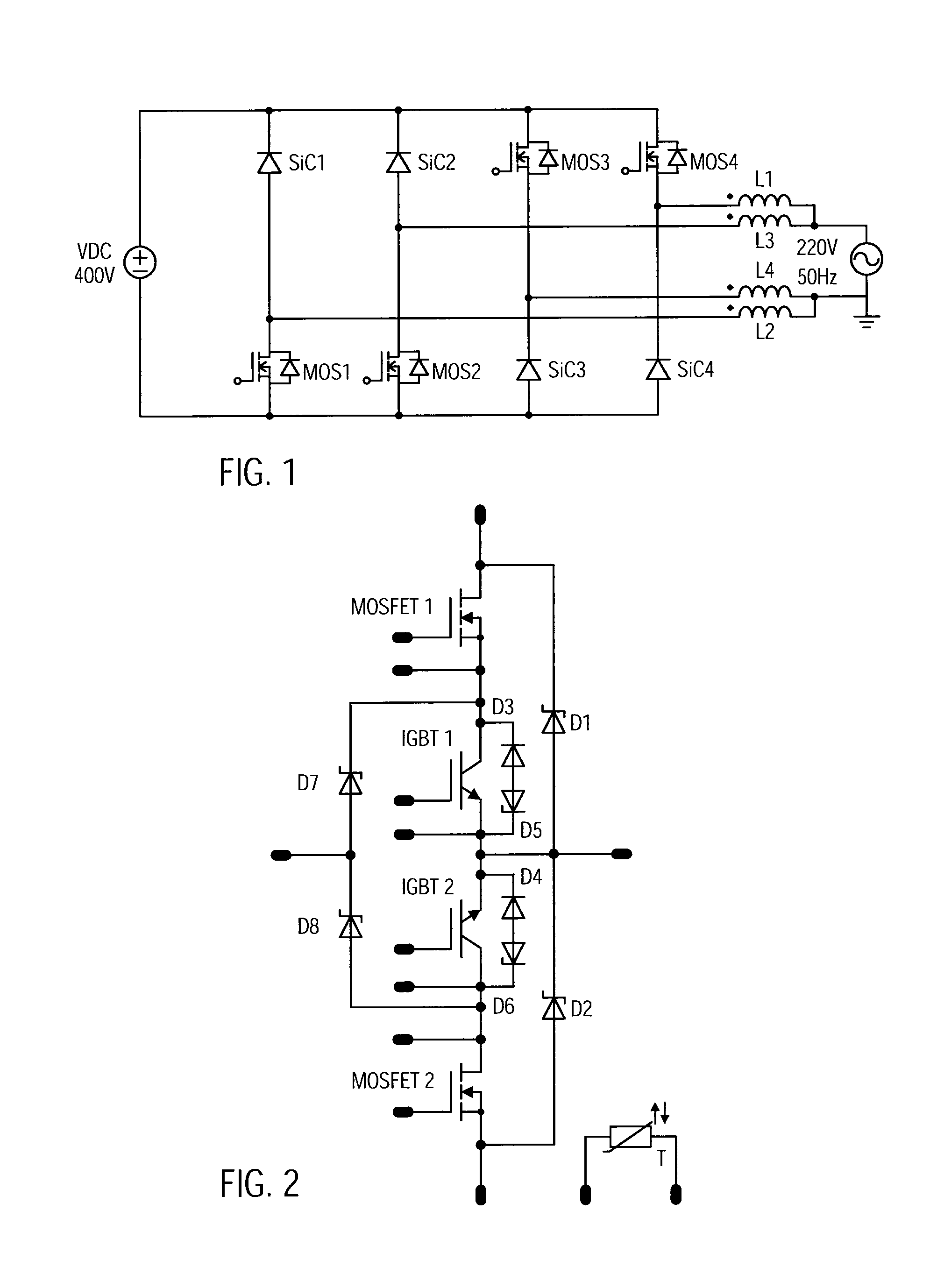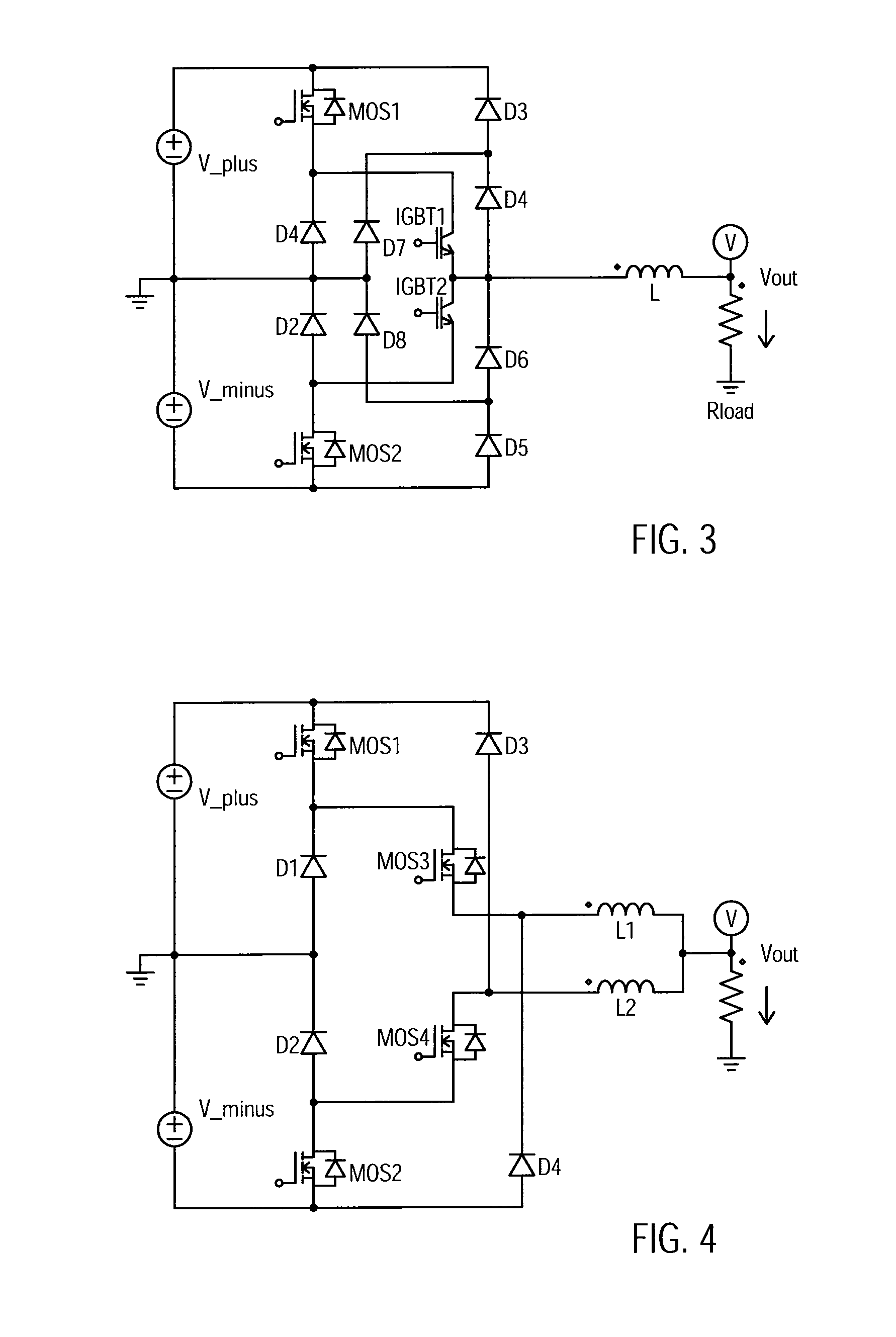Inverter topologies usable with reactive power
a technology of reactive power and inverter, which is applied in the direction of electronic switching, dc-ac conversion without reversal, pulse technique, etc., can solve the problems of high switching loss, poor recovery behavior of internal antiparallel body diodes, and high frequency ringing, and achieve high efficiency of inverter circuits
- Summary
- Abstract
- Description
- Claims
- Application Information
AI Technical Summary
Benefits of technology
Problems solved by technology
Method used
Image
Examples
Embodiment Construction
[0034]FIG. 1 shows a highly efficient inverter topology having the ability to handle a reactive load which uses only MOSFET switches in a full bridge configuration. The circuit shown in FIG. 1 is coupled to a 400 Volt DC input as it results for instance from a solar photovoltaic panel. The output can be connected to the 220 Volt AC 50 Hz power grid and tolerates reactive power, even if it is not only necessary for line impedance meas-urements or for the protection of the components at special conditions. The circuit al-lows for full reactive power and enlarges the use as a cos φ compensation of the power grid and also for fully bidirectional applications, such as high-efficiency battery chargers. An excellent efficiency level is reached in both directions when using silicon carbide Schottky diodes.
[0035]When referring to FIG. 14, a neutral point clamped, NPC, inverter is shown which uses a mixed chip configuration, i.e. MOSFETs in combination with IGBTs. The NPC in-verter of FIG. 14...
PUM
 Login to View More
Login to View More Abstract
Description
Claims
Application Information
 Login to View More
Login to View More - R&D
- Intellectual Property
- Life Sciences
- Materials
- Tech Scout
- Unparalleled Data Quality
- Higher Quality Content
- 60% Fewer Hallucinations
Browse by: Latest US Patents, China's latest patents, Technical Efficacy Thesaurus, Application Domain, Technology Topic, Popular Technical Reports.
© 2025 PatSnap. All rights reserved.Legal|Privacy policy|Modern Slavery Act Transparency Statement|Sitemap|About US| Contact US: help@patsnap.com



